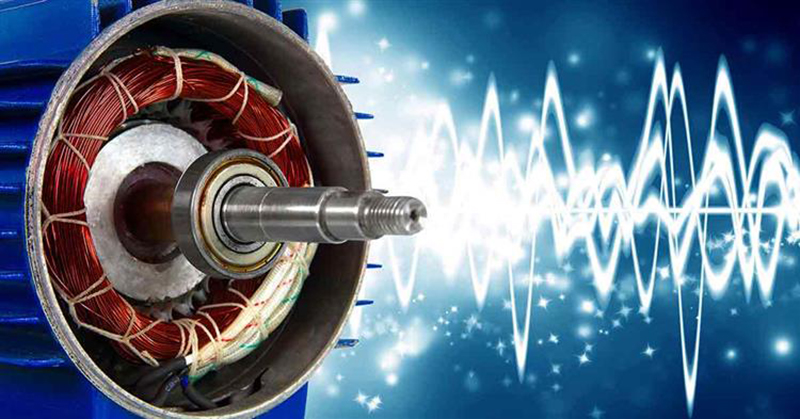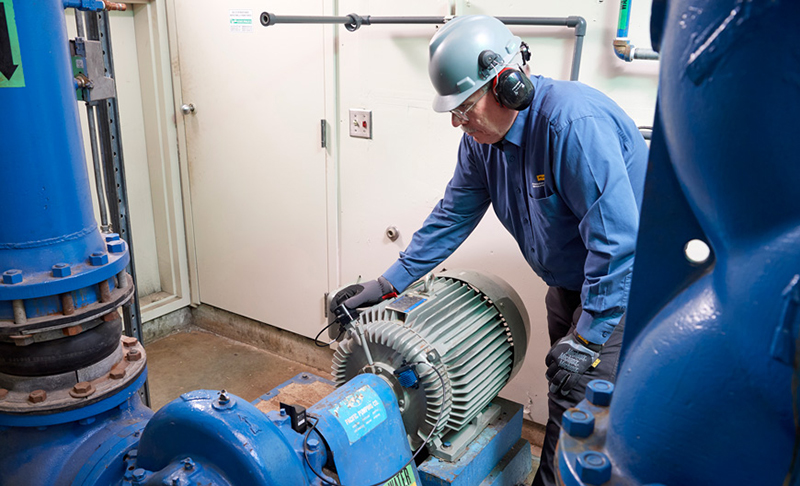Monitoring pump vibration is essential to detect any underlying issues within the pump or its surrounding system. Excessive vibration is often an indication of a problem that warrants immediate attention.
When industrial pump vibration exceeds acceptable levels, the foremost concern is identifying the root cause of the excessive vibration and determining the appropriate corrective measures.
It is crucial to avoid jumping to conclusions and attributing excessive vibration solely to rotor imbalance, as there can be several other underlying causes. The interaction between the excitation force, whether hydraulic or mechanical and the structural frequencies of machinery can result in various types of vibration-related problems.
Vibration amplitude is directly proportional to the intensity of the exciting force and its proximity to the resonant frequency.
Resonance-related problems typically arise in new equipment, but changes to the system can also cause such issues in older installations.
-
Pump Vibration Due To Cavitation
Cavitation is characterized by a loud noise resembling the sound of gravel being thrown around inside the submersible pump. The formation of cavities and low-density bubbles within the fluid, which is displaced at the vacuum side of the pump, leads to this phenomenon.
Poor pump pipe design or a blocked suction outlet can contribute to cavitation. Additionally, pressure bubbles generated by Variable Frequency Drives (VFDs) can cause the pump to operate outside its designated operating range, which may result in cavitation.
When low-pressure bubbles reach the impeller end of the pump, a pressure mismatch occurs, causing the bubbles to rupture. The ruptured bubbles rise to the impeller’s surface, damaging the pump’s housing and rotor.

How To Resolve It
- Inspect and maintain the cleanliness of filters and suction strainers to avoid cavitation.
- Monitor the pump’s curve using a pressure sensor or flow meter to identify potential issues.
- Consider reconfiguring the pump or system if the medium path is unsuitable.
-
Rotor Unbalance
As the velocity of a system increases, rotor imbalance is a common concern. However, upon investigating these particular pumps, it was observed that no significant vibrations occurred at the maximum velocity.
In this particular application, the pump’s “all pass” vibrations were charted at the peak of the submersible motor during various running speeds to control the speed.
Although one might expect an imbalance to cause a peak in vibration at a specific speed, it was observed that the vibration did not exhibit such behavior and instead showed a significant amount of scatter.
-
Bent Shaft
When the rotors are identical, shaft bending can cause significant axial vibration and axial phase variations of nearly 180°. If the bend is in the center of the shafts, the primary instability is observed at 1X RPM, while if the bend is near the connection, it increases to 2X RPM.
Bent shafts in pumps are more commonly observed either at the connection or at the center. In addition, dial indicators may be utilized to detect the presence of bent shafts.
-
Pump Impeller Imbalance
Pumps may exhibit misalignment, faulty bearings, or overheating symptoms in certain cases. However, the root cause of these issues is often traced back to an imbalance in the pump assembly or another related component.
An unbalance in the pump assembly can result in both percussion and heat buildup. Furthermore, the balance scale of the impellers has a significant impact on the lifespan of the pump bearings.
In pumps with center-hung impellers, force mismatch is more common than couple disparity. Therefore, at the pump’s operating speed, the highest vibration level will likely be observed in either the horizontal or vertical direction, with a peak amplitude of 1X RPM.

Hazards Of Pump Impeller Imbalance
- Uncontrolled vibration or bent shafts can cause distortion and damage to the entire system.
- Bearing failures can occur due to the imbalance in the pump impellers.
- Excessive vibrations from the imbalance can harm the pump or the overall system.
- Mechanical sealing or packing issues may arise due to the imbalance.
- Pump seizures can occur due to the imbalance in the impellers.
-
Pump Flow Pulsation
A pump operating close to its shut-off head can cause a shift in pressure sensors located on the outflow piping of the pump. Additionally, if the pump employs a discharging swing check valve, the counterweight and valve arm can fluctuate, resulting in an unsteady flow.
One of the primary causes of pulsation in pumps is the need for proper nutrition. As the plunger extends and fills the pump, the pumped medium must remain in contact with the plunger’s surface. Failure to maintain this contact may result in the plunger striking the fluid, leading to undesirable pulsations.
There are several other causes of flow pulsation in pumps, including:
- Incorrect spring rates
- Leakage in Valve
- A single header is connected to multiple pumps.
- Flow-restricting piping designs
- Worn-out packing

How To Resolve This Problem?
One solution to prevent pump flow pulsation is to utilize a suction stabilizer that helps to maintain consistent contact between the fluid and the plunger. Using this device prevents the pumped medium from separating from the plunger’s surface, which can otherwise cause pulsation.
-
Recirculation
In pumps, flow inversion and low flow at the impeller or discharge ends can cause undesired recirculation.
In pump systems, we can categorize undesired recirculation into suction and discharge. When the flow is redirected, suction recirculation occurs in the impeller’s eye, generating low-pressure bursts. This problem is related to cavitation, which can cause significant impeller degradation over time.
To prevent suction recirculation, it is essential to ensure that the flow rate and suction conditions are within the pump manufacturer’s recommended limits and properly design the suction piping system.
Another type of undesired recirculation in pump systems is discharge recirculation, which occurs when the flow at the pump’s outlet side is redirected, resulting in turbulence and other issues. A discharge throttling valve or other flow control devices can also help prevent discharge recirculation.
-
Problem-Related To Pump Bearing
Because only about some percentage of ball bearings undergo a normal failure mechanism, bearing failure is one of the most common causes of pump vibration.
The pump bearings may last less than the pump, which is designed to last many hours. In addition, the bearings can fail due to pressure, excessive wear, rust caused by weather or chemicals, lubrication breakdown, overheating, or contamination.
Regular lubrication with oil mist, specialist oils, or wax can address this issue with the bearings. The only recurring trend that has been noticed is that as the pump speed increases, so does the vibration, while the pump power augments the energy of the pump vacuum.
The results indicate that the primary force responsible for the issue may not be mechanical, suggesting a hydraulic excitation force could be at play.

-
Shaft Misalignment
Since some amount of vibration is typical in pumps, it is advisable to consult a qualified repair specialist to determine if excessive vibration is caused by shaft misalignment or some other issue.
Detecting and measuring shaft imbalance from the exterior is difficult. No sensors can be installed in a pump to measure the force applied.
As a result, it is critical to use the correct diagnostic techniques and tools to identify shaft imbalance. A specialist may use various methods such as vibration analysis, laser shaft alignment, or trial weights to detect and correct the problem.
Misaligned pumps can display the following symptoms:
- Excessive axial or radial vibration that is not within normal limits
- Abnormally high temperatures in the casing or near the bearings
- Output oil temperatures that are unusually high
- Leakage of oil from the bearing seals in large amounts
- Foundation screws or couplers that are loose
- Pairing issues in the overflow
- Shafts that fracture or break near the inlet bearings or connecting hubs.
Conclusion
It is helpful to detect vibration issues early to prevent unscheduled downtime and allow for scheduled pump maintenance. If you are experiencing problems with your pumps, rotating machinery, or system, contacting your service provider can be beneficial. Additionally, it is advisable to select a reputable pump supplier and manufacturer services that can effectively handle all of your pump repair needs when purchasing a submersible pump.


